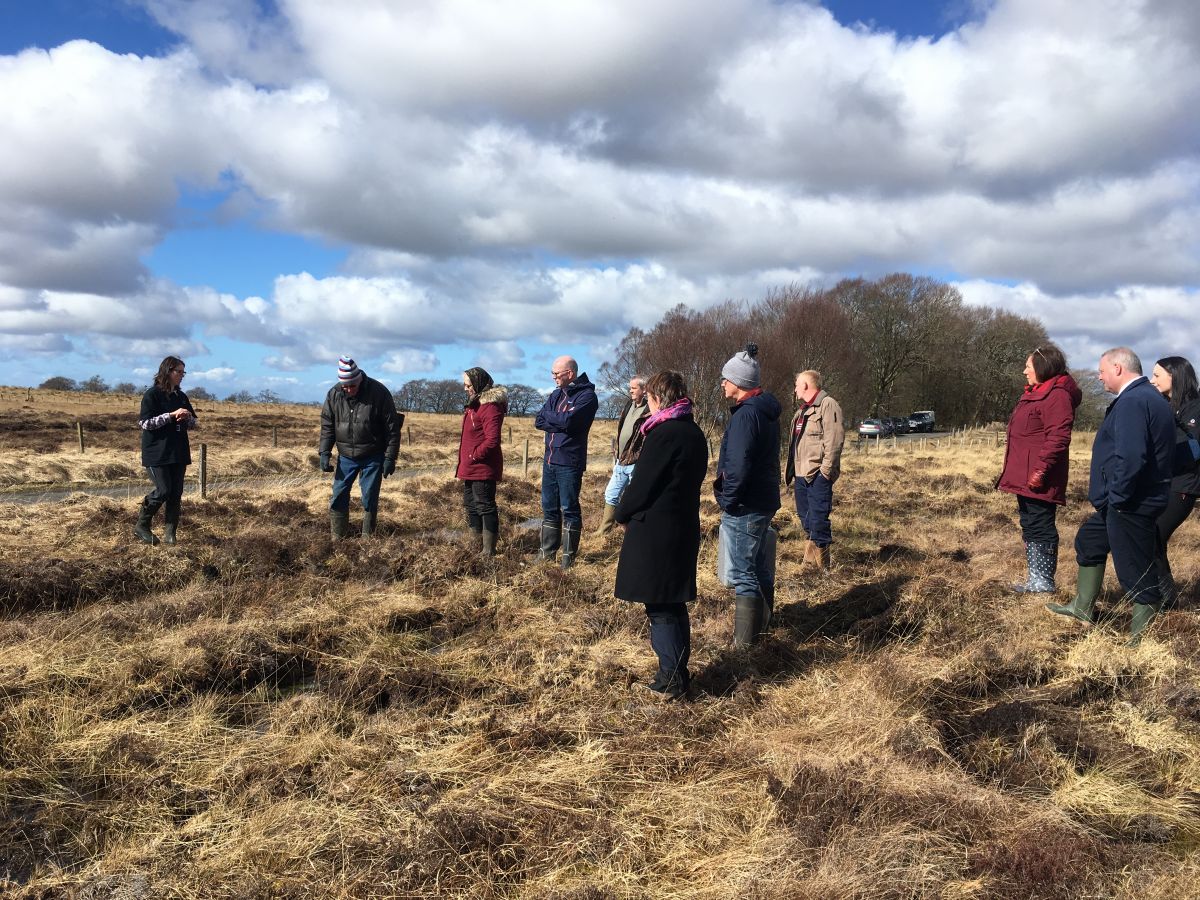People enjoyed a sunny Saturday morning exploring Low Moss near Lugar in an event aimed at raising awareness of the importance of healthy peatlands. The guided walk was organised by the East Ayrshire Coalfield Environment Initiative (CEI) to celebrate the United Nations World Water Day and was opened by East Ayrshire’s Depute Provost Claire Leitch.
 The event gave participants the chance to see the results of restoration work carried out at Low Moss in 2017 as part of the CEI’s Nature Network and EcoCoLIFE projects. Low Moss is a small raised bog situated next to the former Duncanziemere opencast coal mine. It is one of five sites the CEI has been working on across East Ayrshire and so far a total of 479 hectares of peat bog has been restored.
The event gave participants the chance to see the results of restoration work carried out at Low Moss in 2017 as part of the CEI’s Nature Network and EcoCoLIFE projects. Low Moss is a small raised bog situated next to the former Duncanziemere opencast coal mine. It is one of five sites the CEI has been working on across East Ayrshire and so far a total of 479 hectares of peat bog has been restored.
CEI Project Officer Gemma Jennings said “The theme of this year's World Water Day is 'Nature for Water' - looking at how protecting nature can help us solve water challenges. The CEI has been ‘re-wetting’ peat bogs damaged by historic land management practices such as drainage and burning so we decided to mark World Water Day with a trip to one of our recent restoration sites – Low Moss.
“Restoration brings about many benefits - peatlands are capable of storing large volumes of water so help prevent flooding and are great for filtration, improving the quality of water entering our rivers. Healthy peatlands also store carbon, which would otherwise be released as carbon dioxide, and therefore play a major role in combating climate change. A damaged peat bog on the other hand will release carbon, thus contributing to climate change.
“In terms of wildlife, our peatlands are home to an array of unique species from the carnivorous sundew plant to adders and short-eared owls. We want to raise the profile of these wonderful, wild places and encourage people to appreciate peatlands and why it's so important to look after them. World Water Day provided an opportunity to recognise the value of East Ayrshire’s peatlands and was great to see so many people turn out on the day.”
The Depute Provost Claire Leitch said “We’re all aware that many human activities are a threat to our environment, and how everything we do can have an impact on our natural environment in a way which affects us all. Today’s walk was truly inspirational – an example of human activity contributing to the restoration of healthy ecosystems which can only benefit us and future generations. To see all these volunteers, experts and organisations working together to actually reverse damage and provide a safe haven for so many species and a wonderful area for the community to enjoy is something of which we should all be very proud. We know that we owe it to our young people to look after the planet and after having met many young people who are passionate about both the environment and areas we live, I know it’ll be in good hands.”
The CEI’s work is supported by Scottish Natural Heritage, East Ayrshire Council, and with the contribution of the LIFE+ financial instrument of the European Community. To find out more about the CEI’s projects, events or volunteering opportunities please see www.ea-cei.org.uk or contact CEI Project Officer Gemma Jennings: gemma.jennings@ea-cei.org.uk.










